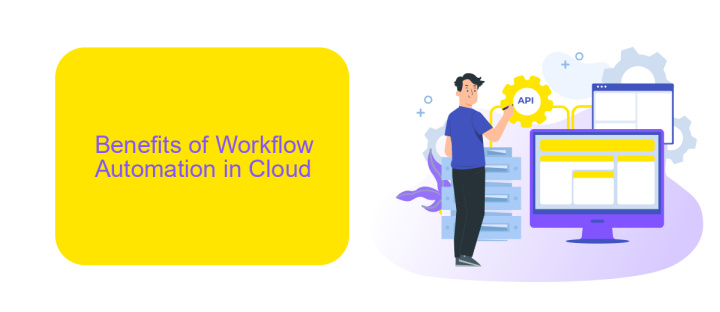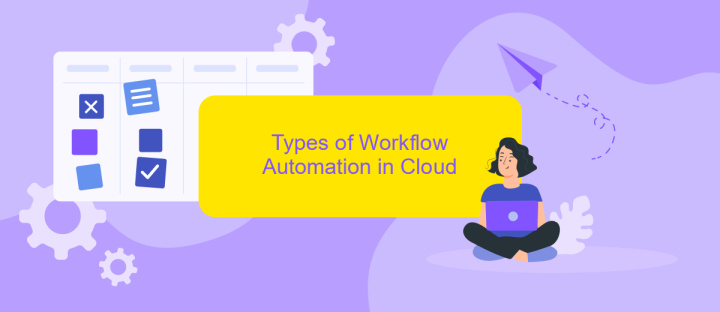Workflow Automation in Cloud
Workflow automation in the cloud is revolutionizing the way businesses operate by streamlining processes, reducing manual tasks, and enhancing efficiency. Leveraging cloud-based tools, organizations can automate repetitive workflows, integrate various applications, and ensure seamless data flow. This transformation not only saves time and resources but also enables teams to focus on strategic initiatives, driving innovation and growth.
Introduction to Workflow Automation in Cloud
Workflow automation in the cloud has revolutionized how businesses operate, streamlining processes and increasing efficiency. By leveraging cloud-based tools, organizations can automate repetitive tasks, reduce human error, and focus on more strategic activities. This shift not only enhances productivity but also offers scalability and flexibility that traditional on-premise solutions cannot match.
- Increased efficiency through automation of repetitive tasks
- Reduction in human error
- Scalability and flexibility
- Enhanced focus on strategic activities
One of the key enablers of workflow automation in the cloud is the integration of various services and applications. Tools like ApiX-Drive facilitate seamless integration, allowing businesses to connect disparate systems and automate data flows effortlessly. By using such services, organizations can ensure that their workflows are not only automated but also optimized for maximum efficiency and effectiveness.
Benefits of Workflow Automation in Cloud

Workflow automation in the cloud offers numerous benefits, including enhanced efficiency and productivity. By automating repetitive tasks, businesses can free up valuable time and resources, allowing employees to focus on more strategic activities. This not only reduces the likelihood of human error but also speeds up processes, ensuring timely completion of tasks. Cloud-based solutions provide scalability, enabling organizations to adjust their workflow automation needs as they grow, without the need for significant infrastructure investments.
Integrating various applications and services is another crucial advantage of cloud-based workflow automation. Tools like ApiX-Drive facilitate seamless integration between different systems, ensuring smooth data flow and communication across platforms. This helps in maintaining data consistency and improves overall operational efficiency. Additionally, cloud solutions offer robust security measures, safeguarding sensitive information and ensuring compliance with industry standards. Overall, workflow automation in the cloud empowers businesses to operate more efficiently, adapt to changing demands, and maintain a competitive edge in the market.
Types of Workflow Automation in Cloud

Workflow automation in the cloud offers various approaches to streamline and optimize business processes. These methods can significantly enhance productivity and reduce manual effort, allowing organizations to focus on more strategic tasks.
- **Task Automation**: Automates repetitive tasks such as data entry, email responses, and scheduling, ensuring consistency and saving time.
- **Process Automation**: Manages end-to-end business processes like order processing, customer onboarding, and invoice management, improving efficiency and reducing errors.
- **Integration Automation**: Connects different applications and services to enable seamless data flow. Tools like ApiX-Drive facilitate easy integration between various cloud services, ensuring that data is synchronized and accessible across platforms.
- **AI-Powered Automation**: Utilizes artificial intelligence to automate complex tasks such as data analysis, predictive maintenance, and customer service chatbots, providing intelligent insights and improving decision-making processes.
Each type of workflow automation in the cloud addresses specific business needs, offering tailored solutions to enhance operational efficiency. By leveraging these automation techniques, organizations can achieve greater agility, scalability, and competitiveness in the market.
Use Cases of Workflow Automation in Cloud

Workflow automation in the cloud offers numerous advantages, streamlining various business processes and enhancing efficiency. One of the primary use cases is the automation of repetitive tasks, which frees up valuable time for employees to focus on more strategic activities.
Another significant use case is the integration of disparate systems and applications. With tools like ApiX-Drive, businesses can effortlessly connect various platforms, enabling seamless data flow and reducing the risk of human error. This can be particularly useful in scenarios where data needs to be synchronized across multiple cloud services.
- Automated data entry and synchronization
- Streamlining approval workflows
- Enhanced reporting and analytics
- Improved customer service through automated responses
By leveraging workflow automation in the cloud, organizations can achieve greater scalability and flexibility. This not only optimizes operational efficiency but also provides a competitive edge in an increasingly digital marketplace. Tools like ApiX-Drive play a crucial role in facilitating these integrations, making the automation process more accessible and efficient.
Best Practices for Workflow Automation in Cloud
To achieve optimal workflow automation in the cloud, it is essential to start with a thorough assessment of your existing processes. Identify repetitive tasks and determine which ones can be automated to save time and reduce errors. Use cloud-native tools and services that are designed for scalability and flexibility. Ensure that your chosen solutions are compatible with your current infrastructure and can integrate seamlessly with other applications.
Implementing robust monitoring and logging mechanisms is crucial for maintaining the efficiency and reliability of automated workflows. Regularly review and update your automation scripts to adapt to changing business needs and technological advancements. Services like ApiX-Drive can simplify the integration process by providing a user-friendly platform to connect various applications without requiring extensive coding knowledge. This ensures that your automated workflows remain agile and can easily adapt to new requirements or changes in your cloud environment.


FAQ
What is workflow automation in the cloud?
How can I start with workflow automation in the cloud?
What are the benefits of using workflow automation in the cloud?
Can I integrate different cloud services for workflow automation?
Is workflow automation in the cloud secure?
Do you want to achieve your goals in business, career and life faster and better? Do it with ApiX-Drive – a tool that will remove a significant part of the routine from workflows and free up additional time to achieve your goals. Test the capabilities of Apix-Drive for free – see for yourself the effectiveness of the tool.

